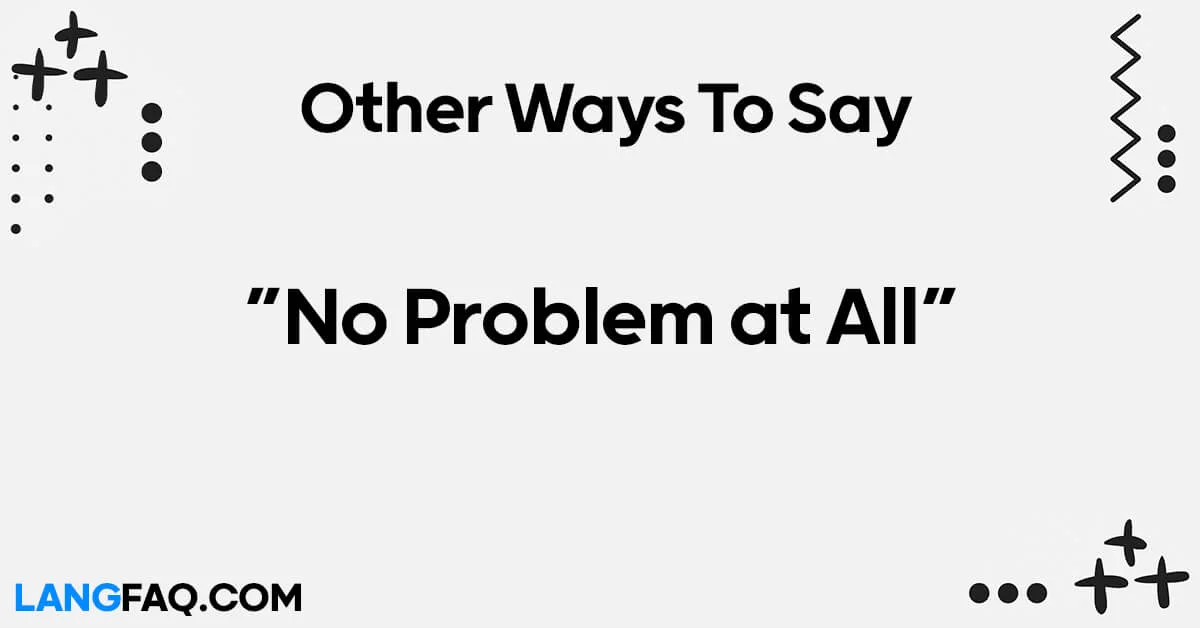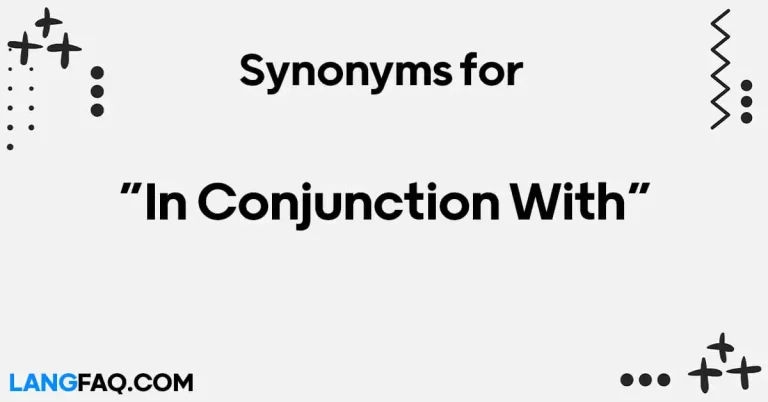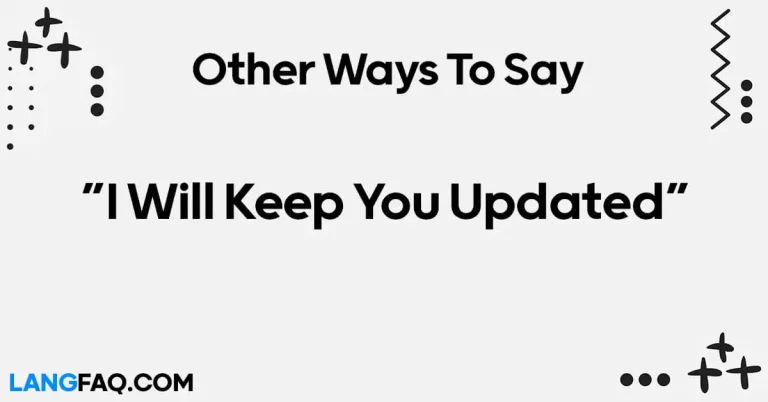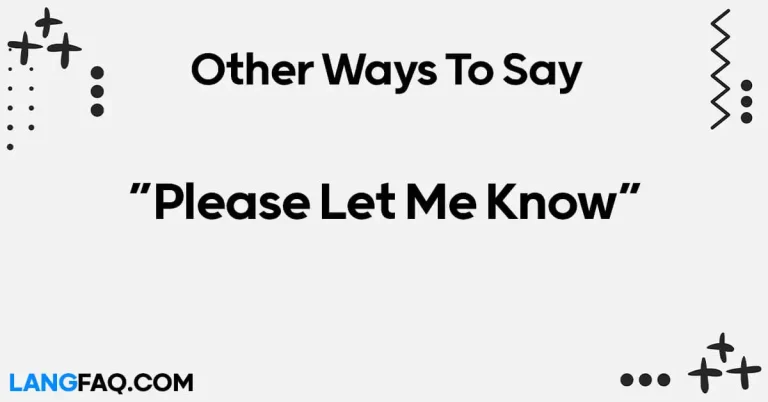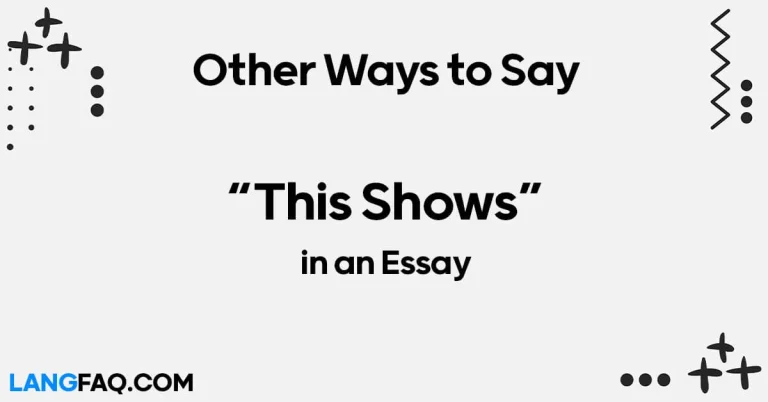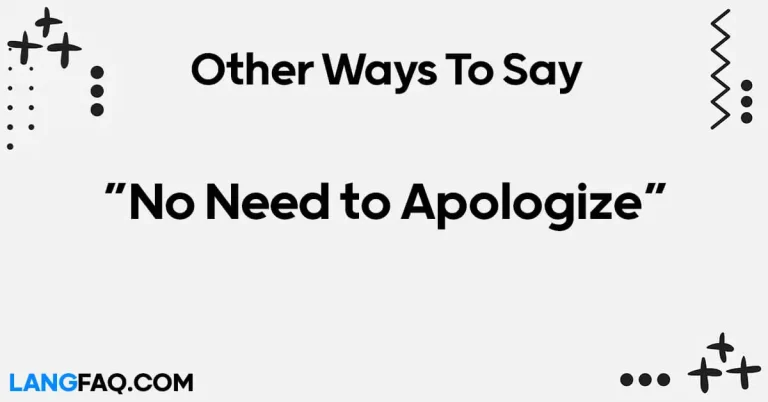Communication is the cornerstone of human interaction, and language serves as its bedrock. Expressing agreement or acceptance gracefully is an essential skill in navigating social and professional realms. While “no problem at all” is a commonly used phrase, diversifying your verbal toolkit can enrich your communication style. In this article, we’ll explore 12 alternative expressions to convey the same sentiment with finesse and versatility.
12 Other Ways to Say “No Problem at All”
Here are 12 other ways to say “no problem at all”:
- No worries: Indicating that there is no need for concern or stress.
- Not a problem: Signifying that the issue or request is easily manageable.
- It’s all good: Assuring that everything is fine and there is no cause for worry.
- Sure thing: Confirming agreement or consent without hesitation.
- Certainly: Expressing assurance and willingness to accommodate.
- With pleasure: Conveying readiness to assist with genuine enthusiasm.
- Of course: Affirming agreement or acceptance with confidence.
- No trouble at all: Reassuring others with humility and sincerity.
- It’s my pleasure: Expressing willingness to help with warmth and hospitality.
- No problemo: Adding a playful or informal touch to acknowledge agreement.
- All good here: Informing that everything is fine and there are no issues.
- Absolutely: Asserting unwavering agreement or consent with confidence.
Here’s the table with meanings and examples of 12 other ways to say “no problem at all”:
| Expression | Meaning | Example |
|---|---|---|
| No worries | No need for concern or stress | “You forgot your umbrella? No worries, I have an extra one.” |
| Not a problem | Easily manageable issue or request | “Can you help me with this task?” “Not a problem, I’ll take care of it.” |
| It’s all good | Everything is fine; no cause for worry | “Sorry for the delay.” “It’s all good, no need to apologize.” |
| Sure thing | Confirmation of agreement or consent | “Could you pass me the salt?” “Sure thing, here you go.” |
| Certainly | Assured agreement or willingness to assist | “May I join you for lunch?” “Certainly, we’d love to have you.” |
| With pleasure | Ready to assist with genuine enthusiasm | “Thanks for helping me move.” “With pleasure, happy to help.” |
| Of course | Confident affirmation of agreement | “Would you mind picking up some groceries?” “Of course, I’ll grab them on my way home.” |
| No trouble at all | Reassuring others with humility and sincerity | “I hope I’m not bothering you.” “No trouble at all, it’s my pleasure.” |
| It’s my pleasure | Willingness to help with warmth and hospitality | “Thanks for the help.” “It’s my pleasure, anytime.” |
| No problemo | Playful or informal acknowledgment of agreement | “Thanks a bunch!” “No problemo, happy to help.” |
| All good here | Assurance that everything is fine | “Is everything okay?” “All good here, thanks for asking.” |
| Absolutely | Asserting unwavering agreement or consent | “Do you mind if I borrow your pen?” “Absolutely, go ahead.” |
These alternative expressions provide a diverse range of ways to convey agreement, assurance, and willingness to assist, enriching communication and fostering positive interactions in various contexts.
Is It Correct to Say “No Problem at All”?
Yes, “No problem at all” is a correct and commonly used phrase in English. It is often used to reassure someone that their request or action did not cause any inconvenience or trouble whatsoever. This phrase is a polite and friendly way to respond to someone’s gratitude or apology. It conveys a sense of ease and willingness to accommodate without any reservations.
Example:
- Person A: “Thank you for helping me with the project.”
- Person B: “No problem at all! I’m happy to assist.”
In this example, Person B is assuring Person A that helping with the project was not a problem in any way, emphasizing their willingness to assist without hesitation.
Professional Mail Example With “No Problem at All”
Subject: Re: Follow-Up on Meeting Agenda
Dear [Recipient’s Name],
Thank you for reaching out and following up on the meeting agenda. It’s always appreciated to ensure that everyone is on the same page before our discussions.
Regarding your request for additional information, I’ve attached the relevant documents to this email. Please feel free to review them at your convenience. If you have any further questions or require clarification, please don’t hesitate to reach out.
As for the delay in sending the agenda, I want to assure you that it’s no problem at all. I understand that things can get busy, and I’m just glad we have the opportunity to address any issues or questions beforehand.
Looking forward to our meeting and productive discussions.
Best regards,
[Your Name]
No Worries: Embracing a Stress-Free Attitude
In our fast-paced lives, stress and worries often cloud our interactions and relationships. However, by incorporating the phrase “no worries” into our vocabulary, we can create a more relaxed and supportive atmosphere. This expression conveys reassurance and understanding, letting others know that their concerns are acknowledged but not a cause for alarm.
When to Use “No Worries”
- Informal Settings: Among friends, family, or casual acquaintances, “no worries” offers a laid-back and friendly response to alleviate concerns.
- Professional Environment: In the workplace, using “no worries” can diffuse tension and demonstrate empathy while addressing minor mistakes or issues.
- Customer Service: When dealing with customer inquiries or complaints, employing “no worries” shows a proactive and customer-centric approach to problem-solving.
Variations of “No Worries”
- No problem: A slightly more formal alternative suitable for professional contexts.
- It’s fine: Conveys a similar sentiment in a concise manner, suitable for casual interactions.
Example Usage:
Dialogue between colleagues:
- Colleague 1: “I’m sorry for the delay in sending you the report.”
- Colleague 2: “No worries, I understand. Take your time.”
Email Sample: Subject: Re: Meeting Agenda Hi [Colleague’s Name],
No worries about the delay in sending the agenda. We have plenty of time before the meeting. Looking forward to discussing it with you.
Best regards, [Your Name]
Not a Problem: Acknowledging Manageable Situations
“Not a problem” is a versatile phrase that conveys ease and capability in handling various situations. Whether it’s a small favor or a more significant task, using this expression reassures others that their requests are manageable and can be addressed without difficulty.
When to Use “Not a Problem”
- Offering Assistance: When someone asks for help or a favor, responding with “not a problem” affirms your willingness to assist without hesitation.
- Addressing Apologies: Instead of dismissing apologies outright, acknowledging them with “not a problem” shows understanding and forgiveness.
- Reassuring Others: In situations where someone expresses concern or hesitation, using “not a problem” can alleviate worries and promote a positive outlook.
Variations of “Not a Problem”
- It’s no trouble: A more formal alternative suitable for professional contexts or when addressing minor inconveniences.
- Happy to help: Conveys genuine enthusiasm in offering assistance, suitable for both formal and informal interactions.
Example Usage:
Dialogue between friends:
- Friend 1: “I hope I’m not bothering you with all these questions.”
- Friend 2: “Not a problem at all! I’m here to help you figure things out.”
Email Sample: Subject: Re: Quick Favor Hi [Friend’s Name],
Not a problem at all! I’d be happy to help. Just let me know what you need.
Take care, [Your Name]
It’s All Good: Promoting Positivity and Reassurance
“It’s all good” is a comforting phrase that emphasizes the positivity of a situation, regardless of any challenges or setbacks. This expression reassures others that everything is fine and there is no cause for worry or concern.
When to Use “It’s All Good”
- Offering Reassurance: When someone expresses anxiety or concern about a situation, responding with “it’s all good” provides reassurance and promotes a sense of calm.
- Resolving Conflict: In moments of tension or disagreement, using “it’s all good” signals a willingness to move past the issue and maintain harmony.
- Accepting Imperfections: When things don’t go as planned, embracing the phrase “it’s all good” fosters resilience and a positive outlook, encouraging flexibility and adaptability.
Variations of “It’s All Good”
- Everything’s fine: A straightforward alternative that conveys a similar sentiment, suitable for both formal and informal contexts.
- No need to worry: Offers a more explicit reassurance, suitable for addressing specific concerns or anxieties.
Example Usage:
Dialogue between colleagues:
- Colleague 1: “I’m sorry for the mix-up with the project deadline.”
- Colleague 2: “It’s all good, mistakes happen. Let’s focus on finding a solution.”
Email Sample:
Subject: Re: Project Update
Hi [Colleague’s Name],
It’s all good! We can work together to address the issue and meet the deadline. Let’s discuss the next steps in our meeting.
Best regards, [Your Name]
Sure Thing: Asserting Confidence and Willingness
“Sure thing” is a straightforward and affirmative response that conveys confidence and readiness to accommodate requests or agreements. This expression assures others that their needs will be met without hesitation.
When to Use “Sure Thing”
- Confirming Agreements: When someone requests your assistance or consent, responding with “sure thing” affirms your commitment without reservation.
- Expressing Willingness: In situations where flexibility and cooperation are required, using “sure thing” demonstrates your readiness to accommodate others’ needs.
- Offering Reassurance: When someone seeks assurance or confirmation, employing “sure thing” provides clarity and decisiveness in your response.
Variations of “Sure Thing”
- Absolutely: Conveys unwavering agreement or consent, suitable for formal or professional contexts.
- Certainly: Offers a more formal alternative that emphasizes assurance and willingness to assist.
Example Usage:
Dialogue between friends:
- Friend 1: “Would you mind picking me up from the airport tomorrow?”
- Friend 2: “Sure thing! I’ll be there right on time.”
Email Sample: Subject:
Re: Tomorrow’s Plan
Hi [Friend’s Name],
Sure thing, I can pick you up from the airport. Just let me know your flight details.
Looking forward to seeing you, [Your Name]
Certainly: Assuring Assurance and Accommodation
“Certainly” is a versatile expression that conveys unwavering assurance and willingness to accommodate. This word not only affirms agreement but also indicates a commitment to fulfilling requests or addressing concerns with confidence.
When to Use “Certainly”
- Formal Situations: In professional settings, using “certainly” adds a touch of formality while expressing agreement or consent.
- Polite Reassurance: When responding to requests or inquiries, incorporating “certainly” conveys politeness and reassurance.
- Offering Assistance: When someone seeks help or support, responding with “certainly” demonstrates your willingness to accommodate their needs.
Variations of “Certainly”
- Of course: A slightly less formal alternative that conveys similar assurance and agreement.
- Absolutely: Emphasizes unwavering certainty and confidence in your response.
Example Usage:
Dialogue between colleagues:
- Colleague 1: “Could you please review this document before the meeting?”
- Colleague 2: “Certainly, I’ll take a look at it right away.”
Email Sample: Subject:
Re: Document Review Request
Hi [Colleague’s Name],
Certainly, I’ll review the document and provide feedback before the meeting. Thanks for reaching out.
Best regards, [Your Name]
With Pleasure: Embracing Enthusiastic Assistance
“With pleasure” is a warm and enthusiastic expression that conveys genuine willingness to assist or accommodate. This phrase adds a personal touch to interactions, fostering a sense of warmth and hospitality.
When to Use “With Pleasure”
- Gracious Acceptance: When receiving requests or invitations, responding with “with pleasure” expresses genuine enthusiasm and eagerness to participate.
- Offering Help: When someone seeks assistance or support, using “with pleasure” conveys a willingness to go above and beyond to help.
- Expressing Gratitude: When expressing thanks or appreciation, incorporating “with pleasure” acknowledges the gesture with heartfelt sincerity.
Variations of “With Pleasure”
- Happy to help: Conveys a similar sentiment in a more casual and informal manner.
- My pleasure: Offers a concise alternative that emphasizes personal satisfaction in assisting others.
Example Usage:
Dialogue between friends:
- Friend 1: “Would you like to join us for dinner tonight?”
- Friend 2: “With pleasure! I’d love to catch up with you both.”
Email Sample:
Subject: Re: Dinner Invitation
Hi [Friend’s Name],
With pleasure! I’d be delighted to join you for dinner tonight. Looking forward to it.
Warm regards, [Your Name]
No Trouble at All: Dispelling Concerns with Sincerity
“No trouble at all” is a humble and sincere expression that reassures others without diminishing their concerns. This phrase conveys a willingness to assist or accommodate with genuine sincerity and hospitality.
When to Use “No Trouble at All”
- Alleviating Concerns: When someone expresses hesitation or reluctance, responding with “no trouble at all” reassures them that their request is welcome and will be addressed with care.
- Offering Assistance: In situations where help or support is needed, using “no trouble at all” conveys a willingness to go the extra mile without inconvenience.
- Expressing Gratitude: When receiving thanks or appreciation, incorporating “no trouble at all” acknowledges the gesture with humility and sincerity.
Variations of “No Trouble at All”
- It’s my pleasure: Offers a similar sentiment with a slightly more personal touch, emphasizing the satisfaction derived from assisting others.
- Happy to assist: Conveys willingness to help with enthusiasm and positivity, suitable for both formal and informal interactions.
Example Usage:
Dialogue between colleagues:
- Colleague 1: “I hate to bother you, but could you help me with this task?”
- Colleague 2: “No trouble at all! I’m happy to lend a hand.”
Email Sample:
Subject: Re: Assistance Needed
Hi [Colleague’s Name],
No trouble at all! I’d be happy to assist you with the task. Just let me know what you need.
Best regards, [Your Name]
It’s My Pleasure: Elevating Service with Warmth and Hospitality
“It’s my pleasure” is a gracious and heartfelt expression that adds warmth and hospitality to interactions. This phrase not only acknowledges gratitude but also emphasizes the joy derived from assisting others.
When to Use “It’s My Pleasure”
- Providing Service: In customer service or hospitality roles, using “it’s my pleasure” adds a personal touch to interactions, enhancing the overall experience for the customer or guest.
- Expressing Gratitude: When receiving thanks or appreciation, incorporating “it’s my pleasure” conveys genuine satisfaction in assisting others and fosters positive rapport.
- Offering Assistance: In everyday interactions, using “it’s my pleasure” demonstrates a willingness to help with genuine warmth and enthusiasm.
Variations of “It’s My Pleasure”
- Glad to help: Offers a similar sentiment in a more casual and informal manner, suitable for everyday interactions with friends or colleagues.
- Delighted to assist: Conveys genuine enthusiasm and eagerness to help, suitable for formal or professional contexts.
Example Usage:
Dialogue between friends:
- Friend 1: “Thanks for helping me move. I really appreciate it.”
- Friend 2: “It’s my pleasure! I’m glad I could be of assistance.”
Email Sample:
Subject: Re: Moving Assistance
Hi [Friend’s Name],
It’s my pleasure to help you with the move. Let me know if there’s anything else you need.
Warm regards, [Your Name]
No Problemo: Adding Playful Informality to Interactions
“No problemo” is a fun and informal expression that injects a lighthearted tone into interactions. This phrase conveys a casual reassurance that everything is fine and there’s no need for concern.
When to Use “No Problemo”
- Casual Settings: Among friends, family, or in informal conversations, using “no problemo” adds a playful touch to interactions, fostering a relaxed and friendly atmosphere.
- Alleviating Concerns: When someone expresses worry or hesitation, responding with “no problemo” reassures them in a light-hearted manner, easing tensions and promoting positivity.
- Acknowledging Minor Inconveniences: In situations where small mistakes or inconveniences occur, using “no problemo” conveys a laid-back attitude and a willingness to let things slide.
Variations of “No Problemo”
- No sweat: Offers a similar casual reassurance, implying that the situation is easily manageable and not worth worrying about.
- Piece of cake: Conveys confidence and ease in handling a situation, suggesting that it’s as effortless as eating a slice of cake.
Example Usage:
Dialogue between friends:
- Friend 1: “Sorry for being late to the movie, traffic was terrible.”
- Friend 2: “No problemo! We haven’t started yet, so you didn’t miss anything.”
Email Sample:
Subject: Re: Running Late
Hey [Friend’s Name],
No problemo about being late! Traffic happens. See you soon!
Take care, [Your Name]
All Good Here: Assuring Smoothness and Comfort
“All good here” is a casual and succinct expression that assures others that everything is fine and there are no issues to worry about. This phrase conveys a sense of ease and comfort in the current situation.
When to Use “All Good Here”
- Informal Updates: When checking in with friends or colleagues, using “all good here” provides a quick and positive response to inquiries about one’s well-being or current status.
- Confirming Comfort: In social or professional settings, incorporating “all good here” reassures others that everything is under control and there’s no cause for concern.
- Alleviating Concerns: When someone expresses worry or curiosity, using “all good here” dispels any doubts or hesitations, promoting a sense of ease and confidence.
Variations of “All Good Here”
- Everything’s fine and dandy: Adds a playful tone to the expression, emphasizing that everything is not just good but excellent.
- Smooth sailing: Conveys a similar sentiment of ease and comfort, suggesting that everything is proceeding smoothly without any obstacles.
Example Usage:
Dialogue between colleagues:
- Colleague 1: “How’s the project going?”
- Colleague 2: “All good here! We’re making progress and everything is on track.”
Email Sample:
Subject: Project Update
Hi [Colleague’s Name],
Just wanted to give you a quick update – all good here! We’re making great progress and should meet our deadlines without any issues.
Best regards, [Your Name]
Absolutely: Firm Agreement and Consent
“Absolutely” is a confident and decisive expression that signifies unwavering agreement or consent. This word conveys certainty and assurance, leaving no room for doubt or hesitation.
When to Use “Absolutely”
- Asserting Agreement: When responding to requests or proposals, using “absolutely” communicates unequivocal agreement or consent, reinforcing your commitment to the matter at hand.
- Expressing Enthusiasm: In situations where you are genuinely excited or enthusiastic about something, incorporating “absolutely” emphasizes your eagerness and positivity.
- Offering Reassurance: When someone seeks confirmation or validation, responding with “absolutely” provides clarity and confidence in your response, assuring them of your unwavering support or agreement.
Variations of “Absolutely”
- Without a doubt: Offers a similar level of certainty and assurance, suggesting that there is no room for uncertainty or hesitation.
- Most definitely: Conveys strong agreement or consent with a slightly softer tone, suitable for both formal and informal contexts.
Example Usage:
Dialogue between colleagues:
- Colleague 1: “Do you agree with the proposed changes to the project?”
- Colleague 2: “Absolutely! I think they’ll improve efficiency and streamline the process.”
Email Sample:
Subject: Re: Proposed Changes
Hi [Colleague’s Name],
Absolutely agree with the proposed changes! They align perfectly with our objectives and will definitely enhance the project.
Best regards, [Your Name]
With Pleasure: Embracing Enthusiastic Assistance
“With pleasure” is a warm and enthusiastic expression that conveys genuine willingness to assist or accommodate. This phrase adds a personal touch to interactions, fostering a sense of warmth and hospitality.
When to Use “With Pleasure”
- Gracious Acceptance: When receiving requests or invitations, responding with “with pleasure” expresses genuine enthusiasm and eagerness to participate.
- Offering Help: When someone seeks assistance or support, using “with pleasure” conveys a willingness to go above and beyond to help.
- Expressing Gratitude: When expressing thanks or appreciation, incorporating “with pleasure” acknowledges the gesture with heartfelt sincerity.
Variations of “With Pleasure”
- Happy to help: Conveys a similar sentiment in a more casual and informal manner.
- My pleasure: Offers a concise alternative that emphasizes personal satisfaction in assisting others.
Example Usage:
Dialogue between friends:
- Friend 1: “Thanks for helping me move. I really appreciate it.”
- Friend 2: “With pleasure! I’m glad I could be of assistance.”
Email Sample:
Subject: Re: Moving Assistance
Hi [Friend’s Name],
With pleasure! I’d be delighted to help you with the move. Just let me know when and where.
Warm regards, [Your Name]
Conclusion
Mastering various expressions for agreement or acceptance enriches communication dynamics and fosters stronger interpersonal connections. By incorporating these alternatives to “no problem at all” into your lexicon, you can navigate diverse social and professional scenarios with finesse and confidence.
FAQs
What are some casual alternatives to “no problem at all”?
How can I express agreement graciously? You can use phrases like “with pleasure” or “certainly” to convey gracious acceptance.
Are there formal alternatives to “no problem at all”? Yes, you can use phrases like “it’s my pleasure” or “smooth sailing ahead” in formal settings to express agreement or acceptance politely.
Can I use “no problem at all” interchangeably with other expressions? Absolutely! These alternative expressions serve the same purpose and can be used interchangeably based on personal preference or situational context.
What’s the significance of diversifying my verbal toolkit? Diversifying your verbal toolkit enhances your communication versatility, allowing you to tailor your responses to different audiences and situations effectively.
How can I incorporate these alternative expressions into daily conversations? Practice incorporating these expressions into your daily interactions gradually to familiarize yourself with their usage and nuances.

